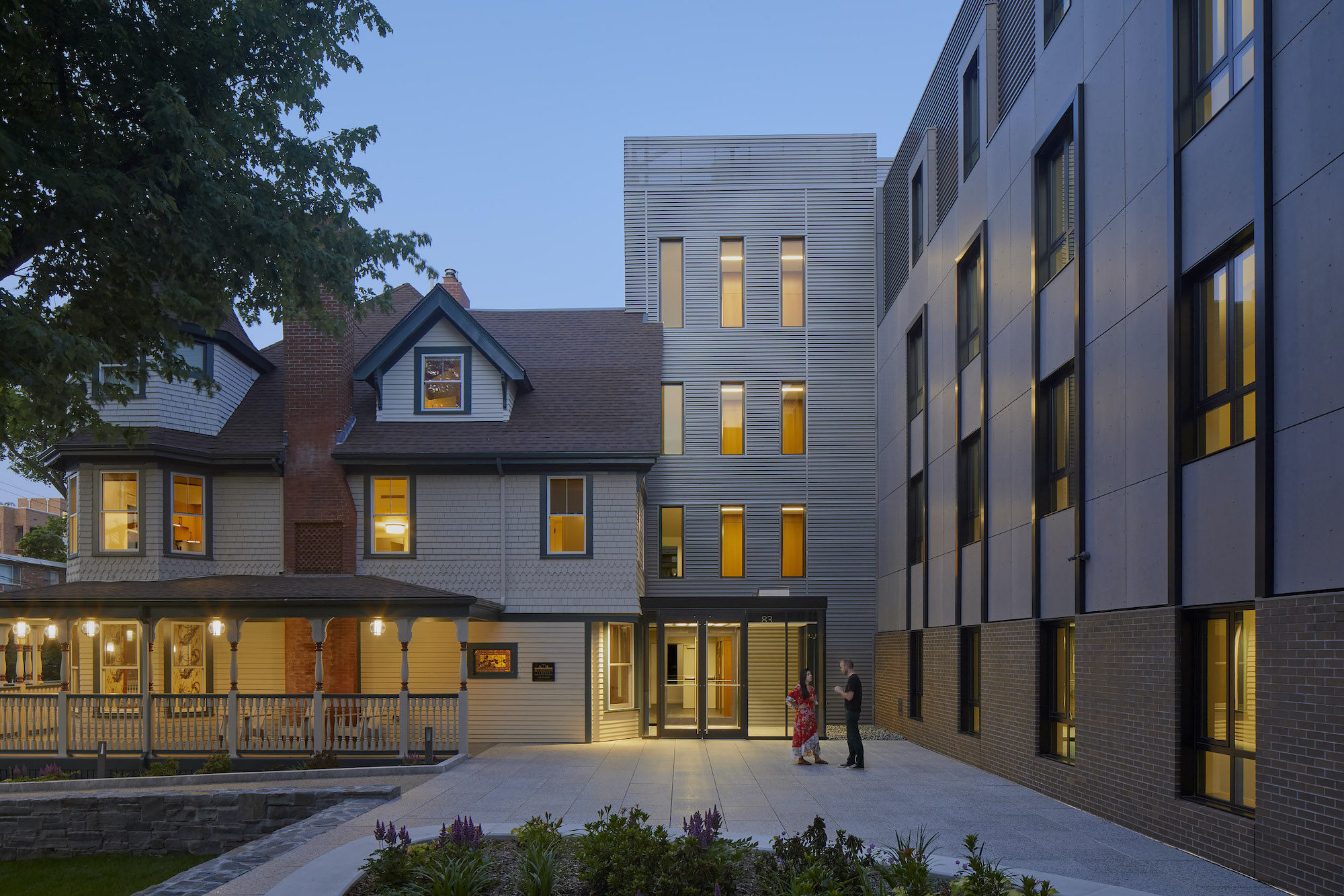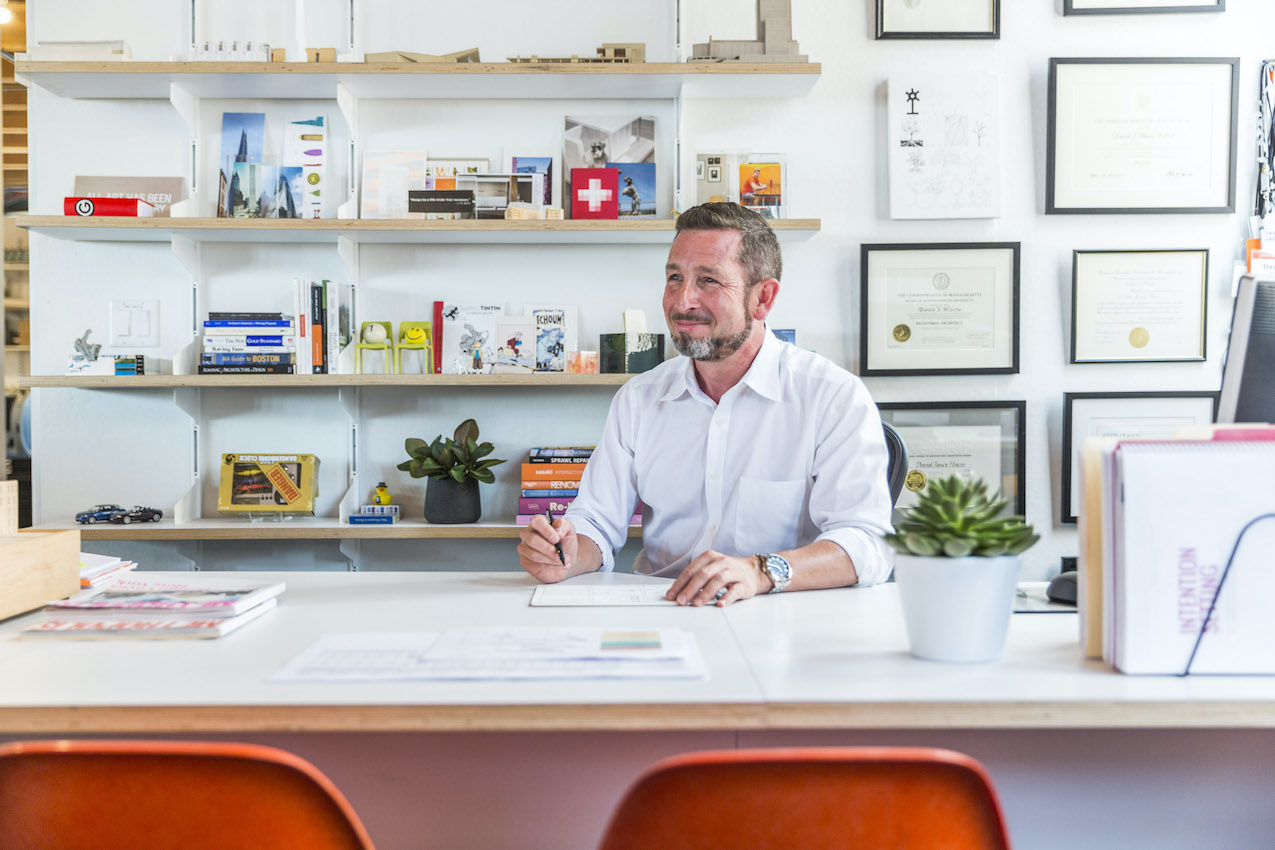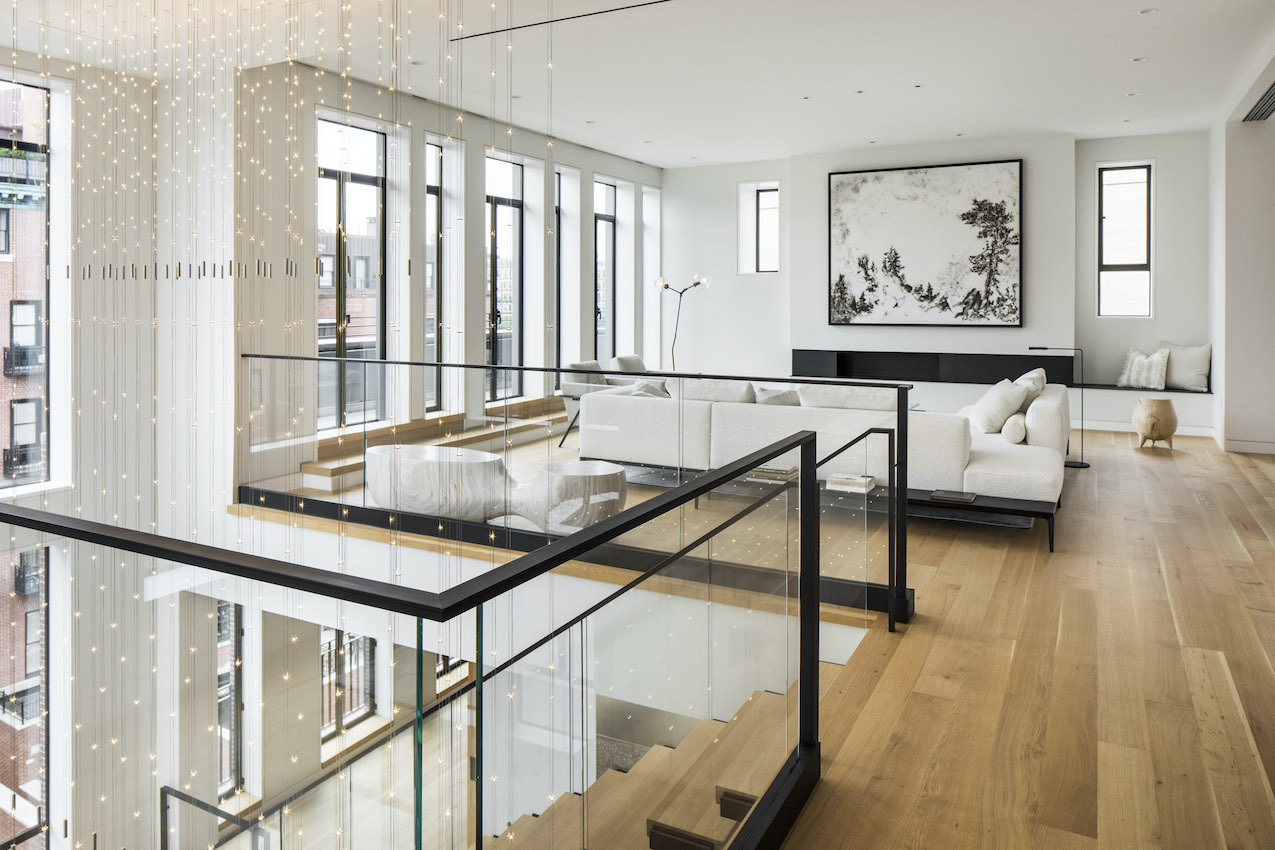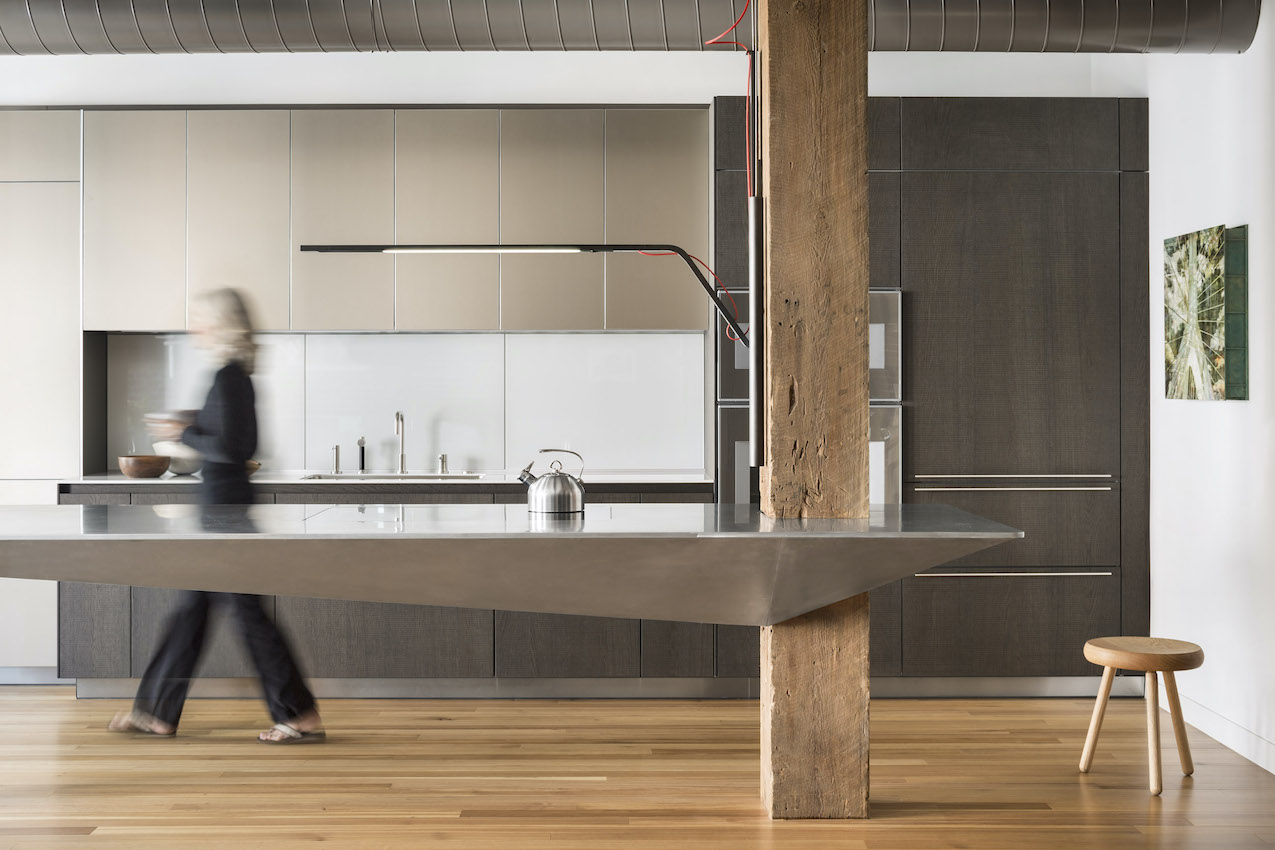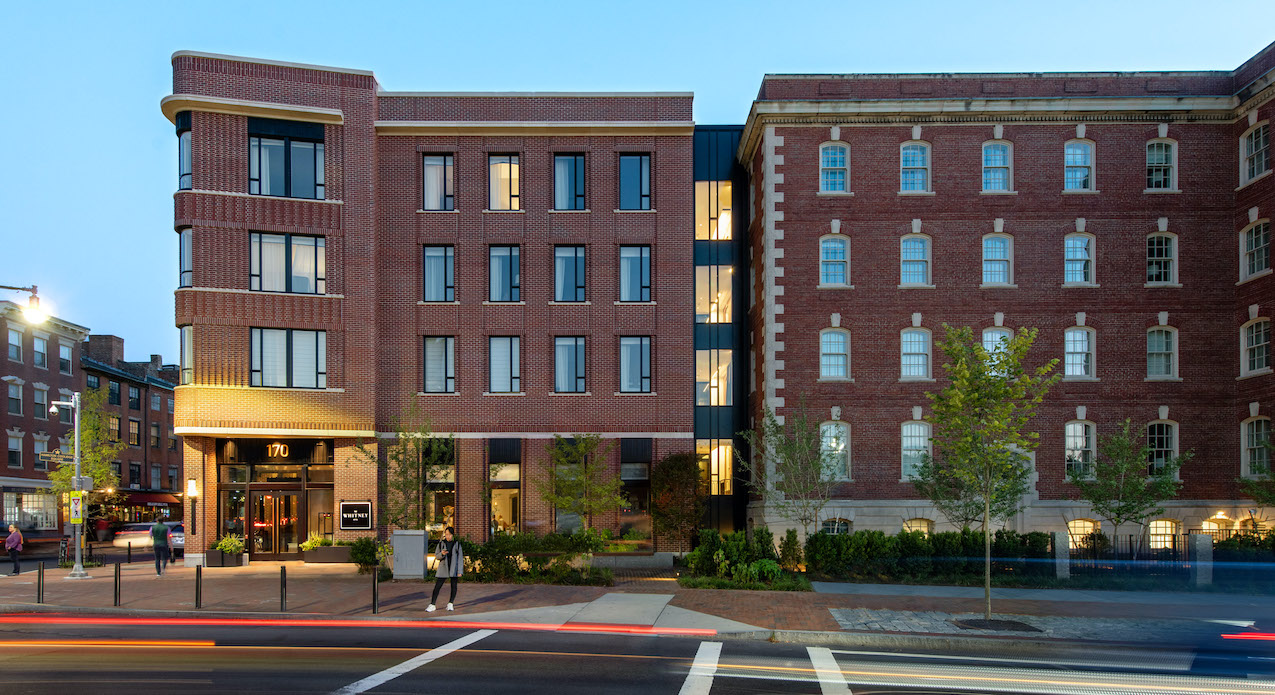If there’s anyone who has the pulse of Boston, it’s David Hacin. After studying architecture at Princeton University and Harvard Graduate School of Design, he formed the multidisciplinary practice Hacin + Associates, in 1993, and has played a central role in shaping the historic city ever since. Over the years, Hacin has emerged as one of the city’s most respected architects thanks to his steadfast devotion to design with character—enhancing a building’s history to create a dialogue between old and new. Just look at the South End where Hacin + Associates has transformed and revitalized the neighborhood with townhouses, historic renovations, a public dog park, restaurants, bakeries, a non-profit headquarters, and hundreds of housing units.
Under Hacin’s leadership, the firm has established itself as a staunch proponent of intentional design, having elevated Boston’s multidimensional neighborhoods with projects such as The Whitney Hotel, Marlborough Townhouse East, Public Garden Townhouse, North End Loft, and Four51 Marlborough. He hasn’t done it alone. Hacin + Associates has come to prominence with the help of a closely collaborating team whose work champions vernacular architecture: an important skill in a town whose heritage stretches back to the nation’s colonial era. Here, Hacin shares how a culture of collaboration fuels design solutions, the importance of contextual architecture, and his firm’s impact on the community.
How would you describe the Boston aesthetic? What would you say is the practice’s contribution to the city?
Boston hasn’t been overrun with global-style architecture. There is a joy in its special characteristics, scale, and character. It’s very livable and neighborhood-oriented. I always use the analogy that it’s more like Brooklyn than Manhattan. As a practice, we do tailored work that enlivens Boston’s history and character.
After building projects all over the city, we are still located in the same neighborhood where we began. The neighborhood is still growing and changing, and we are growing and changing along with it.
I know that the practice is proud of its open, collaborative approach, which seems to be a long-standing value and part of the firm’s DNA. Why is that so important?
It’s all about expectations. The work itself is fostered by an interest in quality, culture, and the people that animate and inhabit it. We try to do the most bespoke work we can by closely collaborating with a curious eye. It takes deep knowledge of what goes into identity and branding. As a practice, the notion that we can learn something from everyone is in our culture. It’s fundamental that we can all add something to the process.
I’m wondering how you maintain that collaborative ethos, how does it manifest in the work?
I grew up working in my father’s office in Switzerland where everyone went down to the café everyday to discuss what they were working on. It’s that feeling of collaboration. That’s why we have a Swiss room, it’s a reminder of that culture.
As a curator of talent, I am proud of our people. Proud work makes a place, a community. This philosophy also takes precedence in our work. We don’t impose style, rather we try to understand a neighborhood to enhance it, make it richer.
While we are mainly rooted in architecture, we have grown to incorporate interior design, graphic design, and branding. Our team comes from a wide variety of educational, professional, and personal backgrounds. We all have a strong focus on doing the best possible work we can for our clients and community. My team is the best in Boston, in both talent and values, hands down.
It’s clear that you’re very proud to be a Boston-based firm. I’m wondering how you feel about your relationship to Boston and place making: how does it influence the design process and what are some of the most beautiful facets of the city’s vernacular character?
We work all across the country. A city like Los Angeles has one idea, one concept of an aesthetic vocabulary. In a place like Boston, you have to see it differently, take a look with fresh eyes. When I am approached with a design problem, be it a renovation or a public building, I dig into its essence. Of each particular place, I ask: What is it in itself? What is its nature? What do people do there? Rather than impose a style or aesthetic notion, I aim to enhance or maintain the character and intensify its uniqueness. For example, our own South End neighborhood, the light is very gray, which makes space feel flat. I counteract that with the warm light of materials like red brick to add atmosphere.
That’s very poetic.
Modeled light in urban spaces creates a feeling that ignites pleasure. It makes the overall design feel robust, but not overly complicated.
What are the tenets of great design?
Design begins with intention. It is not a stylistic perspective, so to speak, it’s about the openness of experience. You must listen. Style can be purchased. We don’t do that, other people do!
What does that look like in practice?
I don’t like muddy lines. I prefer crisp lines you can read against one another. It’s all about contrast, creating a dialogue between old and new to highlight a design’s inherent qualities.
